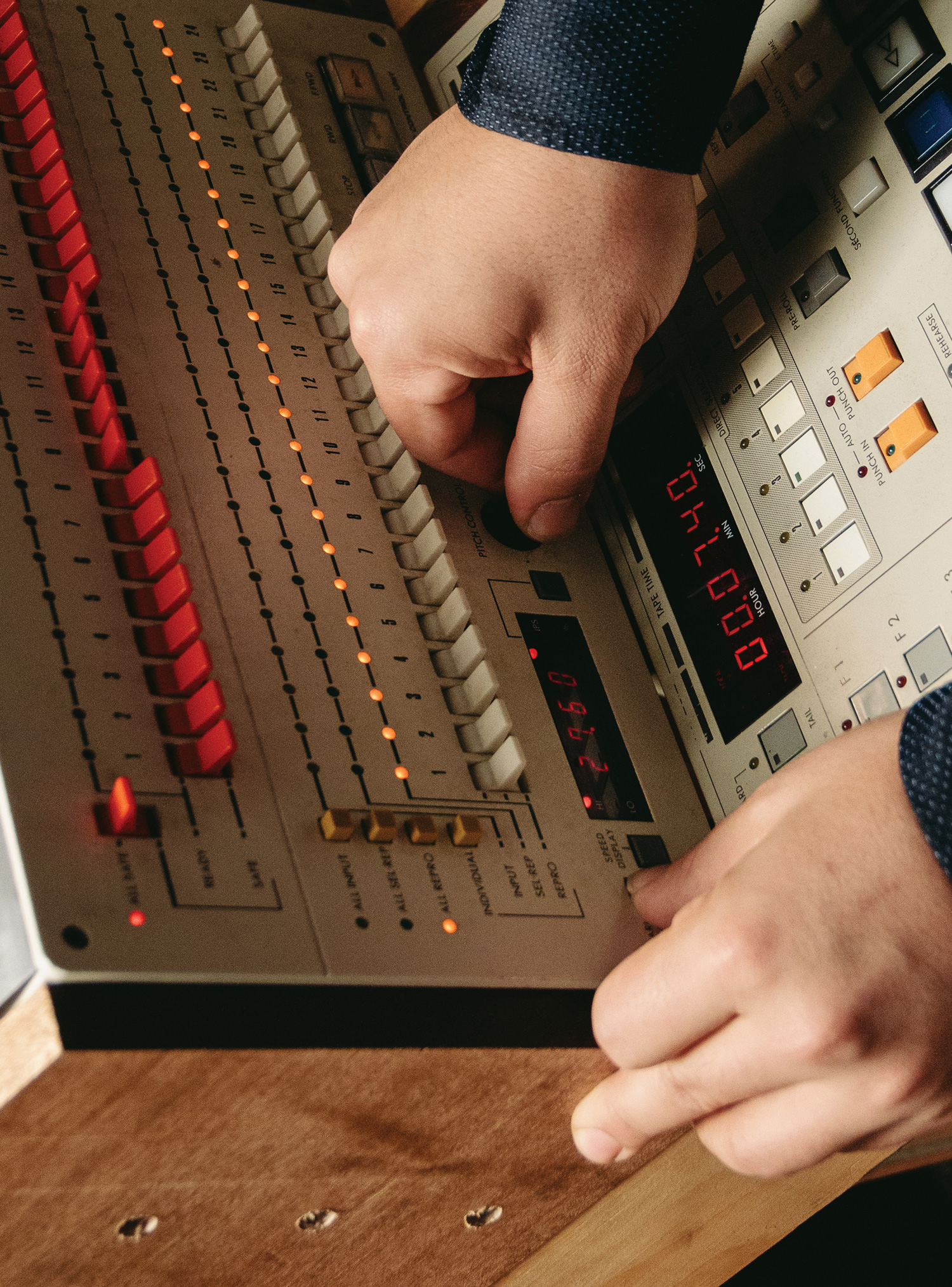I love reverb — all types and on all sorts of instruments. Over the past few years, I've enjoyed using spring reverbs on my mixes. They bring a unique and sometimes unpredictable flavor to a mix. Demeter makes a great spring reverb [Tape Op #109]. Audio Kitchen made one for Billy Bush that I covet. And I really love using the Radial Tank Driver [#107] with my old Accutronics spring that was in my Fender Princeton reverb amp. [Also, Zerotronics {#55, #62} has a whole lineup of fantastic spring reverbs. I own four different models. —AH] But all in all, there are not that many spring reverbs made for mixing, so when I learned that Seattle's Graig Markel of Recovery Effects was making both a mono spring reverb in pedal form and a stereo rackmount unit designed for studio use, I was intrigued.
The Endless Summer Deluxe houses a pair of Accutronics reverb tanks inside a 2RU-height rackmount chassis. On the front are knobs for Balance and Brightness — one set for each tank. Balance varies the amount of wet/dry signal, and Brightness changes the tone of the reverb effect. In back are TRS connectors for balanced, line-level I/O. The internal components are hand-wired with lead-free solder — point-to- point, sans printed circuit board — and new-old-stock and U.S.—made parts are utilized whenever possible. The toggle switch for power is military worthy, and the blue "jewel" light looks good and tells you the unit is on. With two tanks, each with its own set of wet/dry mix and tone controls, the Endless Summer Deluxe can be patched into your system for stereo, dual mono, or even serially chained operation — as an insert effect or in an aux send/return loop.
Where do you start with a spring reverb? I went straight for guitars. It was not the twangy Fender reverb sound I anticipated, but a much richer and darker sound with an interesting "bloom." On vocals, it provided good depth to the track, but I was also able to keep it pretty subtle when I wanted a "clean" sound. The Balance and Brightness controls gave the unit a bit more flexibility than my other spring reverbs while mixing. Typically, when I'm using a reverb as an aux effect, I turn its output to 100% wet. But I found I preferred dialing back the Balance control on the Endless Summer Deluxe so that some of the dry signal was present on the aux return. In this way, the reverb behaved a bit more predictably for me, and made it more useful, especially when I didn't want it spilling all over everything. I also found that inserting a high-pass filter was helpful in preventing the reverb effect from clouding the midrange.
I really liked the variety of tone I could get from the Endless Summer Deluxe. It can be very dark when you want it to be, which provides depth and bloom without any "ping" or "clang," while dialing up its Brightness lets some of the metallic sound come through. But all in all, it is a rich sounding reverb that I found useful on a variety of sources.
I used the Endless Summer Deluxe on keys, guitars, and vocals with varying degrees of success, depending on the song, tempo, and density of mix. I most preferred it on slower tunes that had a bit of extra space, so I could hear the anomalies in the decay of the sound. The anomalies are what I like most about spring reverbs and tape echoes — they contribute to an X factor that you rarely find in digital effects. Mechanical effects are not perfect, and that's the beauty of these devices.
I also experimented with sending the output of the Endless Summer Deluxe to a second aux with an echo plug-in on it. This is something to try if you haven't already. It's a good way to conjure interesting delays, decays, and tails that aren't directly activated by your source. The Endless Summer Pedal is also a fun tool. I used it when mixing in the same manner I integrate any mono stompbox into the process — with a Meris 440 preamp/interface [Tape Op #103] or a Radial Engineering EXTC [#100]. It delivers its own unique sound — quite different from the Deluxe's sound. Inside is a small (really small) dual-spring Accutronics Blue tank, and like its rackmount sibling, the Pedal offers Balance and Brightness knobs. Brightness affects the color and depth of the reverb, as you might expect, but Balance here adjusts a boost circuit, letting you dial in a range of tones, from clean and splashy, to very fuzzy psychedelic bliss. When you get past 3 o'clock, things really start taking on a life of their own. Wet, feedback-prone sonics come to life and are a welcome addition when appropriate. I liked the Endless Summer Pedal best on guitars, but I also had fun sending a vocal to it and blending in the result underneath the dry signal. Having both the Deluxe and Pedal versions available for use while mixing gave me two unique flavor options. I was going to patch in a third spring option, but I didn't have my snorkel.
The Endless Summer spring reverbs from Recovery Effects are cool and unique sounding, and they're certainly worth taking out for a paddle. You can use them anywhere you would normally employ a spring reverb, but don't be scared to do unconventional things with them. Try them on drums and percussion, for example, or go nuts and put them across a whole mix. Hell, you could be so instantly retro and indie rock that Sub Pop, Mute, and Matador will all put you on retainer. Also, I'm pretty sure it is against the law to write an article about spring reverb without mentioning Dick Dale and referencing Jah. So there, consider me legal. Boing, boing.




_disp_horizontal_bw.jpg)